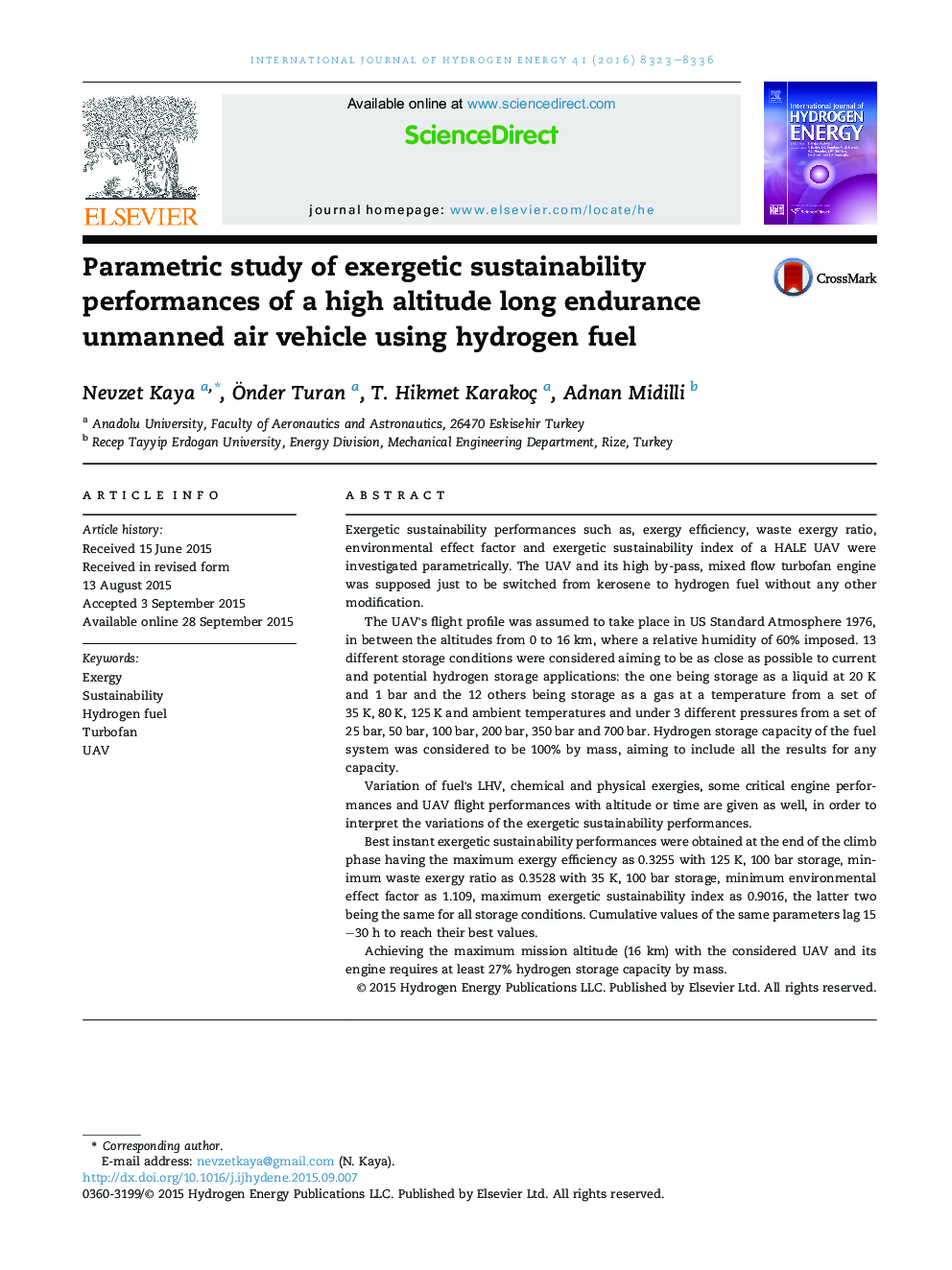| Article ID | Journal | Published Year | Pages | File Type |
|---|---|---|---|---|
| 1277328 | International Journal of Hydrogen Energy | 2016 | 14 Pages |
•Results for a 100% H2 storage capacity includes all the results for any capacity.•Maximum achievable altitude with 5.5% H2 storage capacity by mass is ∼14.6 km.•Minimum H2 storage capacity required for achieving 16 km altitude is ∼27% by mass.•Thrust work increases exergy efficiency, which may be controversial for some missions.•Exergy performances and flight hours can be improved by an engine designed for H2.
Exergetic sustainability performances such as, exergy efficiency, waste exergy ratio, environmental effect factor and exergetic sustainability index of a HALE UAV were investigated parametrically. The UAV and its high by-pass, mixed flow turbofan engine was supposed just to be switched from kerosene to hydrogen fuel without any other modification.The UAV's flight profile was assumed to take place in US Standard Atmosphere 1976, in between the altitudes from 0 to 16 km, where a relative humidity of 60% imposed. 13 different storage conditions were considered aiming to be as close as possible to current and potential hydrogen storage applications: the one being storage as a liquid at 20 K and 1 bar and the 12 others being storage as a gas at a temperature from a set of 35 K, 80 K, 125 K and ambient temperatures and under 3 different pressures from a set of 25 bar, 50 bar, 100 bar, 200 bar, 350 bar and 700 bar. Hydrogen storage capacity of the fuel system was considered to be 100% by mass, aiming to include all the results for any capacity.Variation of fuel's LHV, chemical and physical exergies, some critical engine performances and UAV flight performances with altitude or time are given as well, in order to interpret the variations of the exergetic sustainability performances.Best instant exergetic sustainability performances were obtained at the end of the climb phase having the maximum exergy efficiency as 0.3255 with 125 K, 100 bar storage, minimum waste exergy ratio as 0.3528 with 35 K, 100 bar storage, minimum environmental effect factor as 1.109, maximum exergetic sustainability index as 0.9016, the latter two being the same for all storage conditions. Cumulative values of the same parameters lag 15–30 h to reach their best values.Achieving the maximum mission altitude (16 km) with the considered UAV and its engine requires at least 27% hydrogen storage capacity by mass.
Graphical abstractFigure optionsDownload full-size imageDownload as PowerPoint slide
